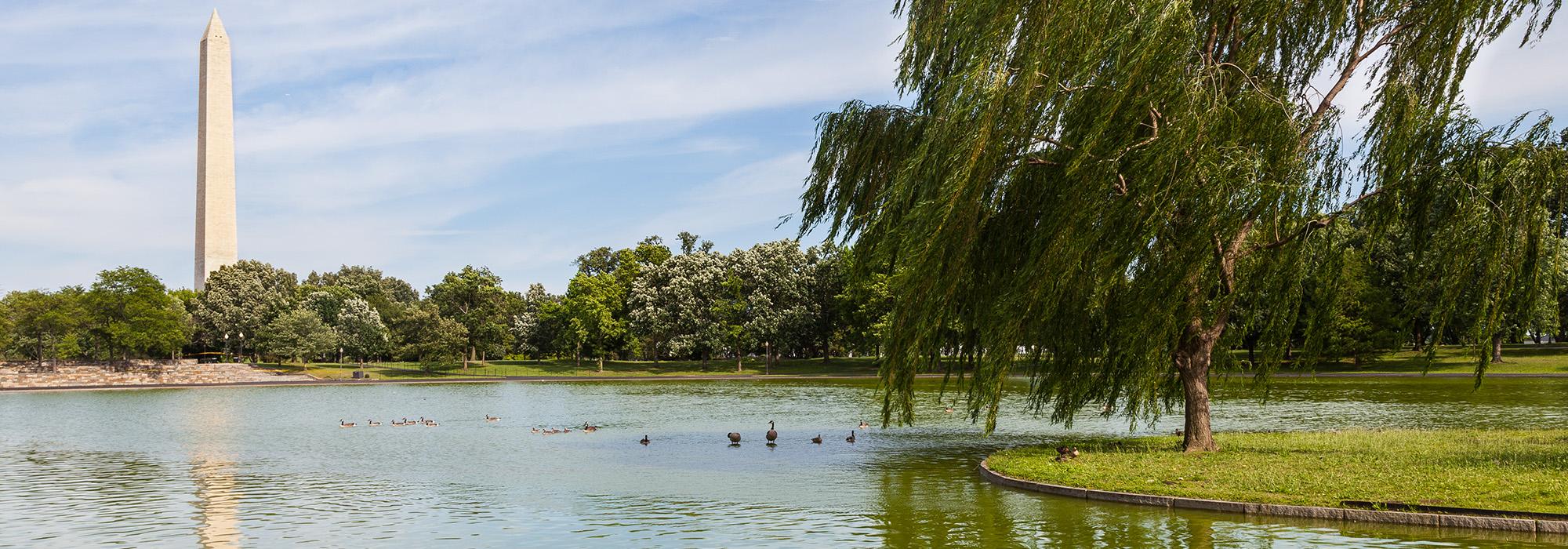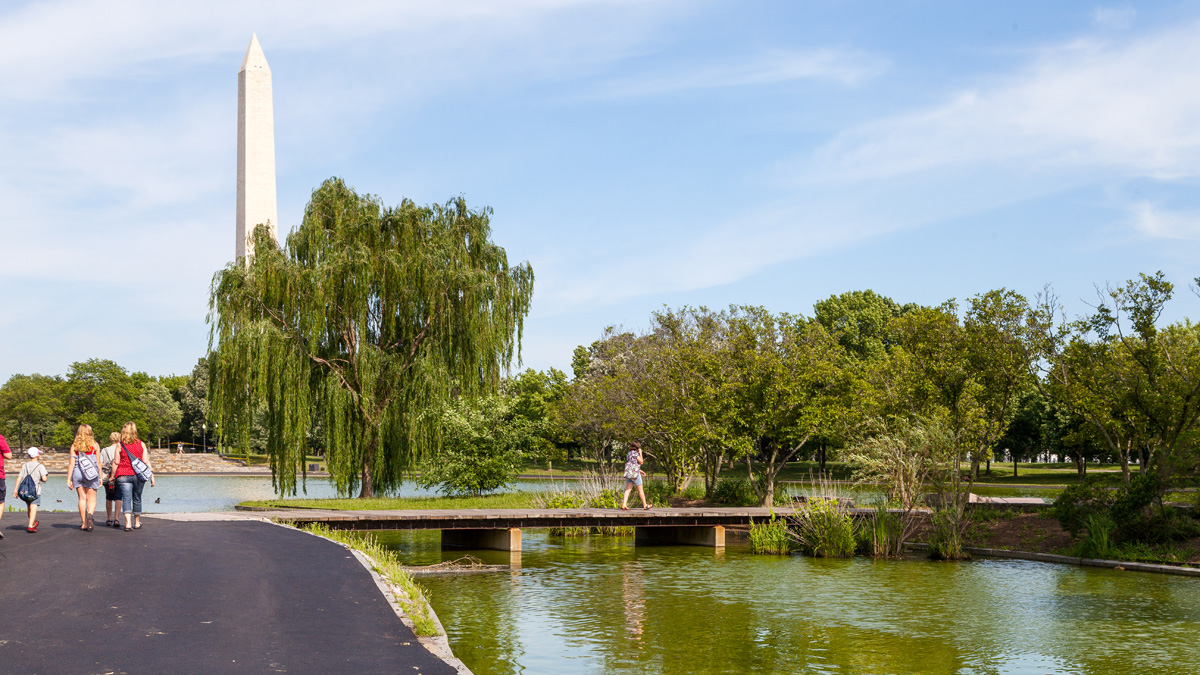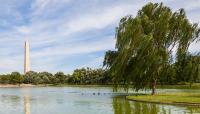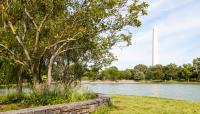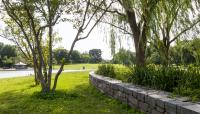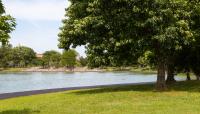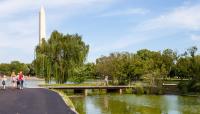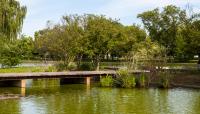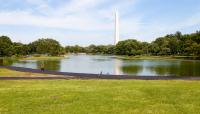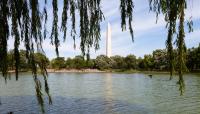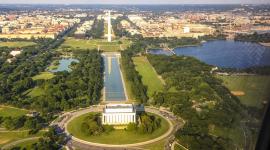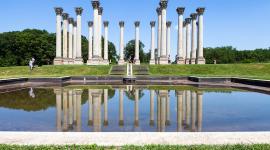Landscape Information
Originally submerged beneath the Potomac River, the 52 acres now forming the Constitution Gardens were reclaimed by the U.S. Army Corps of Engineers in the nineteenth century. Initially part of the 621-acre Potomac Park, the land was later occupied by office buildings used by the U.S. Navy and the Munitions Department during World War I. In the 1970s President Richard Nixon ordered that the structures be removed and replaced with parkland. Designed by the architectural firm Skidmore, Owings & and Merrill (SOM), with the assistance of landscape architect Dan Kiley, the gardens were dedicated in May 1976 in honor of the American Revolution Bicentennial. In 1984 the landscape architecture firm EDAW installed a memorial dedicated to the signers of the Declaration of Independence on a small island in the garden’s lake. In 2012 PWP Landscape Architecture won a national competition to redesign the gardens.
Situated parallel to the Lincoln Memorial Reflecting Pool, the Picturesque grounds were designed by SOM and Kiley as a contrast to the formalism of the surrounding National Mall. Obscured from the south by the National Mall’s flood control levee, the rectangular park comprises gently rolling meadows and a 6.75-acre kidney-shaped pond inspired by Roberto Burle Marx’s biomorphic modernism. An interconnected network of shaded meandering walks reinforces the free-form, curving nature of the pond. The Vietnam Veterans Memorial, installed in 1981, and a crushed stone plaza known as the Overlook Terrace, mark the park’s east and west extremities, respectivley. Because of poor soil conditions, the original plant palette of nearly 2,000 trees, arranged by SOM and Kiley as a transitional boundary from the Mall’s grand axis, was replaced by a mixture of native deciduous and upland understory species. The East and West Potomac Park Historic District listed in the National Register of Historic Places in 1973 was updated to include the Constitution Gardens in 1999.



